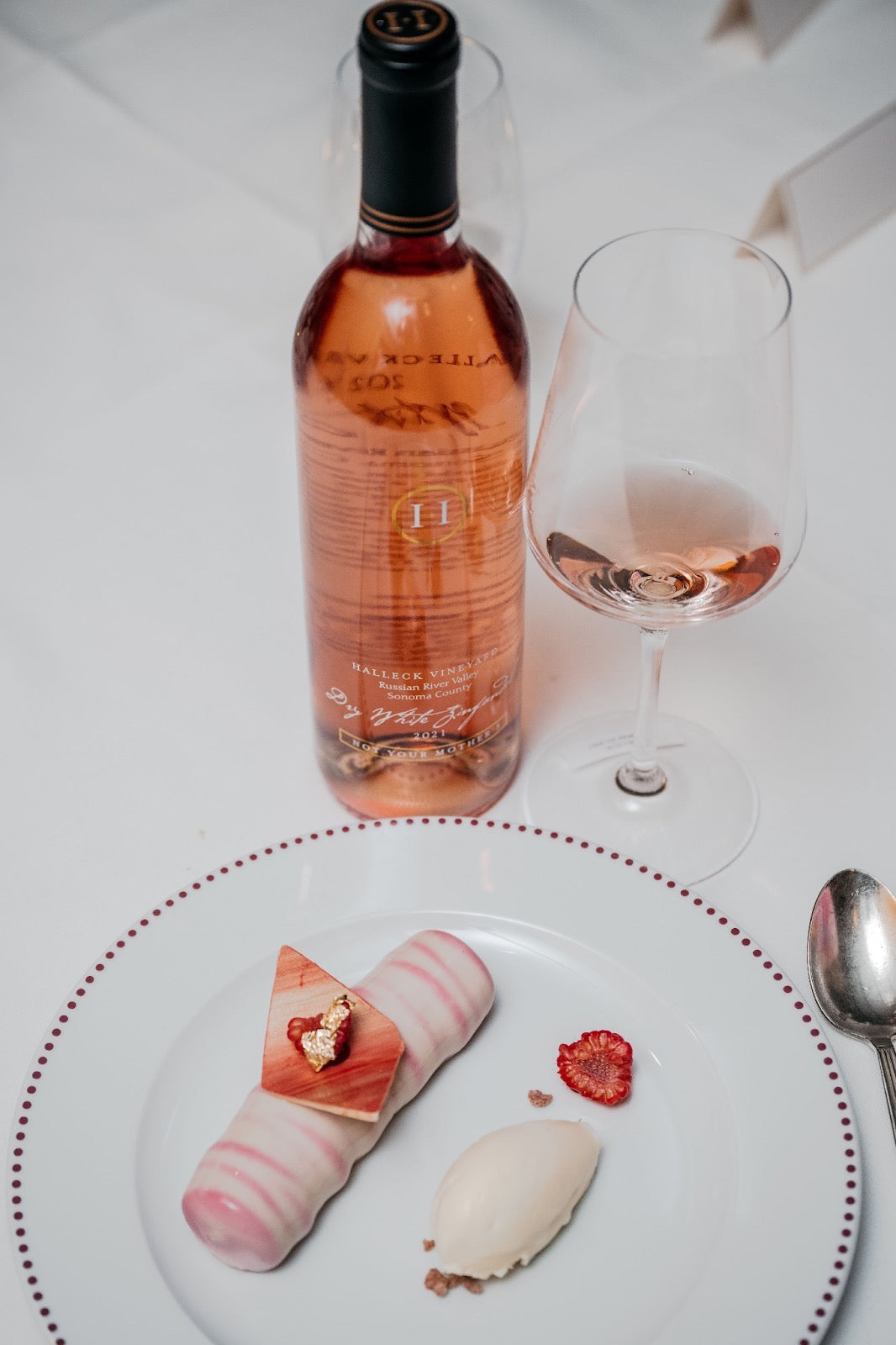Indulge in Award-Winning Pinot Noir and Chardonnay from Sonoma 95404
Indulge in Award-Winning Pinot Noir and Chardonnay from Sonoma 95404
Blog Article
Top Wine from Sonoma County Vineyards You Must Try 95409
Understanding the nuanced vocabulary associated with winery wine tasting is crucial for each novices and seasoned connoisseurs alike. Every term brings to life the experience of tasting wine and may improve one’s appreciation of the numerous intricacies involved. Wine tasting is more than simply drinking; it's an art that includes numerous senses and feelings.
To start with, the term "nostril" refers back to the aromas one detects when smelling the wine. This is a vital step because the bouquet sets the stage for the tasting experience. Notes of fruit, spice, earth, and wooden may mingle, offering a glimpse of what the palate might affirm. Understanding "nosing" the wine can dramatically elevate one's sensory journey.
Another key aspect is the term "body." The body of the wine describes its weight and fullness on the palate. A full-bodied wine has a strong presence and tends to linger longer after swallowing. Conversely, light-bodied wines might feel extra delicate and refreshing. Recognizing the physique helps tasters assess the wine's construction and stability.
Plan the Perfect Vineyard Experience in Sebastopol
The concept of "tannins" is vital in purple wine tasting. Tannins are compounds derived from grape skins, seeds, and stems, contributing to a wine's texture and aging potential. High tannin wines usually end in a dry mouthfeel, whereas lower tannin levels yield a smoother experience. This distinction is especially necessary when pairing wines with food, as tannins can either complement or clash with certain dishes.
In addition to tannins, "acidity" performs a major role in the wine tasting experience. Acidity provides wine its crispness and liveliness - Delicious Food and Wine Pairings to Try in Sonoma County. Wines with higher acidity are usually refreshing and energizing, making them excellent companions for a wide range of meals. Recognizing acidity can drastically improve one’s food-pairing capabilities and total tasting enjoyment.
When delving into the flavor profile of a wine, one could encounter the term "finish." The finish refers again to the aftertaste that lingers within the mouth after swallowing. A long end is usually related to high-quality wines, because it signifies complexity and depth. A short end might suggest a much less complicated wine. Figuring Out the method to evaluate the end can reveal much about a wine's character.
Exploring the "vintage" is also integral to wine tasting terminology. The vintage denotes the 12 months in which the grapes have been harvested. Different years can yield vastly totally different outcomes as a outcome of variations in climate situations. For occasion, a scorching summer can produce extra concentrated flavors, while a cooler 12 months might yield extra refined, nuanced wines. Understanding vintage allows for a deeper appreciation of a wine’s origin and potential.
Savor the Essence of Estate Wines in Sonoma County 95403
The term "terroir" encompasses the geographical and environmental components that contribute to a wine's unique character. Factors corresponding to soil type, local weather, elevation, and topography all play a task in the flavor and high quality of the wine. This connection to place helps one perceive why wines from totally different areas can taste so distinctively different, even when created from the same grape selection (Immerse Yourself in the World of Sonoma's Wineries).

When engaging with wines, the phrase "leg" refers to the droplets that form on the within of the glass after swirling. These droplets can point out the wine's alcohol content material and viscosity. Whereas observing the legs won't immediately relate to the wine’s taste, it adds to the general experience and intrigue of wine tasting much less clear.
Upcoming Events at Sonoma Wineries 95407
A extra particular term that may arise during tastings is "oak." The influence of oak barrels on wine can impart flavors corresponding to vanilla, toast, or spice. The degree of oak getting older can range broadly amongst wines, affecting each aroma and style. Understanding oak therapy supplies insights into the winemaker’s selections and the ensuing complexity of the wine.
In wine tasting, one may also hear the term "palate." The palate refers back to the overall taste experience in the mouth. This encompasses sweetness, bitterness, acidity, and body. A well-balanced palate is essential for a harmonious tasting experience, and recognizing any imbalances helps assess the quality of the wine.
The experience of wine tasting is greatly enriched by understanding the terminology that accompanies it. Each term serves a function, enhancing the flexibility to see this page convey ideas and emotions concerning the wine one's experiencing. This vocabulary bridges communication between tasters, sommeliers, and winemakers alike.
To fully get pleasure from wine tasting, it is important to interact all senses. The sight of the wine, its colour, and clarity can provide perception into its age and high quality. Swirling the wine releases aromas that heighten the olfactory experience, while the actual tasting allows for a whole analysis of the wine's profile.
Expert Advice for Visiting Sonoma Wineries 95461
In conclusion, understanding the detailed explanation of winery wine tasting terminology significantly enhances the experience of tasting. Every term invitations the taster to have interaction extra deeply with the wine, encouraging connections to the senses, the winemakers, and the lands the place the grapes are grown. This nuanced vocabulary creates a richer, more fulfilling wine tasting experience.
- Aroma refers again to the scents launched by the wine, which may point out its grape selection and affect the tasting experience.
- Tannins are natural compounds found in grape skins, seeds, and stems, contributing to the wine's structure and aging potential.
- A finish, or aftertaste, is the lingering flavor sensation that remains on the palate after swallowing, typically a key indicator of high quality.
- Physique describes the weight and fullness of wine in the mouth, usually categorized as light, medium, or full-bodied.
- Terroir denotes the unique environmental characteristics of a vineyard that have an result on the style and high quality of the wine, together with soil type and climate.
- Acidity is a crucial element that contributes to a wine's freshness and stability, impacting its growing older capability and overall flavor profile.
- Vintage indicates the yr grapes have been harvested and plays a significant position in determining the wine's characteristics, reflecting specific weather conditions.
- Decanting entails pouring wine from its bottle into one other vessel, permitting it to aerate and enhancing its flavors and aromas.
- A corked wine may be tainted by a defective cork, resulting in musty or off-putting flavors that detract from the wine's meant profile.
- The term “legs” refers to the droplets that cling to the inside of a glass after swirling, often associated with the wine's alcohol content material and viscosity.undefinedWhat is the that means of "nostril" in wine tasting?undefinedThe "nostril" refers back to the aroma profile of the wine, which is detected through the sense of smell. It's a vital facet of wine tasting, as aromas can reveal lots about the grape selection, winemaking course of, and growing older.
How should I properly style wine?undefinedTo taste wine effectively, follow these steps: observe the colour, swirl the wine to aerate it, take a mild sniff to capture the aromas, sip and let it coat your palate, and finally, note the end. This strategy helps in appreciating the wine’s complexity.
What are "tannins" and the way do they have an effect on wine?undefinedTannins are pure compounds present in grape skins, seeds, and stems that contribute to a wine's structure and astringency. They can create a drying sensation in the mouth, and so they additionally play a role in the wine's getting older potential.
Elevate Your Wine Tasting with Onsite Dining

What does the term "balance" imply in wine tasting?undefinedBalance refers again to the harmony between the completely different elements of a wine, corresponding to acidity, sweetness, alcohol, tannin, and flavor intensity. A well-balanced wine could have each of those elements supporting each other somewhat than overpowering the others.
What is the significance of "terroir" in wine tasting?undefinedTerroir encompasses the environmental factors—such as soil, local weather, and geography—that influence the traits of the wine produced in a particular area. Understanding terroir helps tasters recognize the distinctive qualities that totally different areas impart to their wines.
What does "vintage" mean and why is it important?undefined"Vintage" signifies the 12 months when the grapes were harvested. It is essential because it impacts the wine’s high quality and characteristics, as climate situations through the rising season can considerably influence flavor profiles and aromatics.
What are "legs" and what do they signify?undefined"Legs" check with the droplets that kind and run down the inside of a glass after swirling wine. Whereas they'll indicate alcohol content material and viscosity, they don't decide quality—this is extra about personal notion of richness.
Reserve Your Spot for Unforgettable Wine Tours in Sonoma
What does "full-bodied" imply versus "light-bodied"?undefined"Full-bodied" wines are rich, dense, and often have larger alcohol content and complicated flavor profiles, while "light-bodied" wines are more delicate and refreshing with a decrease alcohol content. This distinction helps tasters perceive the expected weight and mouthfeel of the wine.
How can I establish fruit flavors in wine?undefinedTo determine fruit flavors, contemplate the aroma and style profiles. Swirl the wine, inhale deeply to capture the bouquet, and focus on specific traits. Familiarity with other typical fruit profiles of varied grape varieties can improve this identification process.
What is "end" in wine tasting?undefinedThe "finish" refers again to the aftertaste that lingers in the mouth after swallowing. A lengthy, complex end is commonly a sign of high quality in a wine, as it displays the depth of flavor and overall craftsmanship in the winemaking course of. Report this page